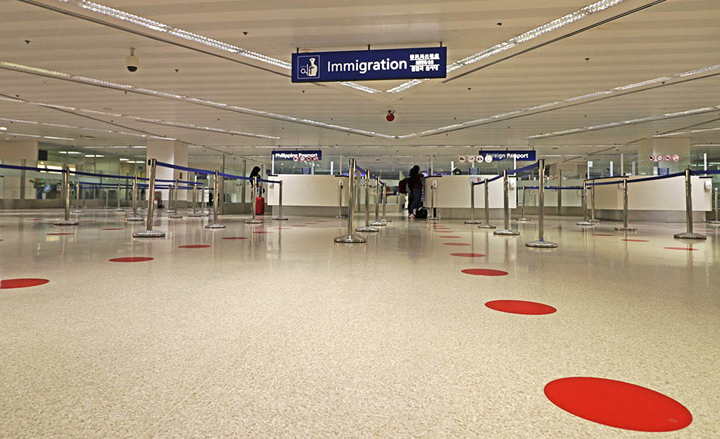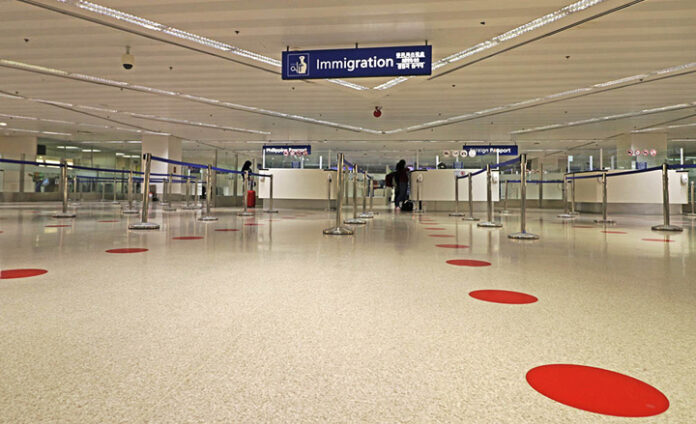
Remove the 2,000 cap on arriving international passengers at the premier airport to boost the economy and revive the local tourism industry. This is the plea of the local airline sector after a year of suffering from low passenger volume.
Since the pandemic struck almost a year ago, the Inter-Agency Task Force for the Management of Emerging Infectious Diseases has mandated local air carriers to limit the number of arriving passengers to prevent the spread of Covid-19. This move has drastically slowed down the airline industry, which suffered the brunt of the pandemic.
Prior to the pandemic, the Ninoy Aquino International Airport (Naia) was host to 40 air carriers with an estimated 600 aircraft movement daily. It processes an estimated 35,000 passengers daily, rising to 50,000 daily during the long Christmas holidays at the three passenger terminals, according to the Media Affairs Department.
Local carriers claimed that the 2,000 daily cap on arriving passengers is not enough to sustain their operations, citing 3 reasons for the immediate lifting of the ban on arrivals. They said there are adequate protective measures, such as testing and quarantine protocols in place to mitigate risk; the government and private laboratories doing the Covid-19 polymerase chain reaction testing can handle more arriving passengers should the passenger limitation be lifted; and the procedures have been fine-tuned and that the government and the private sector now have a full grasp of the problem of passenger screening to determine those with Covid-19.
“The advantage of increasing the number of arriving passengers surely will help the travel industry without compromising public safety and at the same time, it will boost the Philippine economy,” said some ranking officials of the airline sector who requested anonymity.
At present the Naia allows a maximum of 2,000 incoming passengers brought in by 36 airliners, including cargo and repatriation flights.
“The year 2020 was a tough year for the world, upending lives and businesses, spoiling economic plans and business opportunities,” the Civil Aviation Authority of the Philippines (CAAP) said.
According to the International Air Transport Association (IATA), the aviation sector worldwide was especially hit hard by the Covid-19 pandemic.
Michael Gill, executive director of the cross-industry Air Transport Action Group, said, “Our analysis shows that up to 4.8 million jobs in aviation may be lost by the beginning of 2021, a 43 percent reduction from pre-Covid levels.”
“When you expand those effects across all the jobs aviation would normally support, 46 million jobs are at risk. These include highly-skilled aviation roles, the wider tourism jobs impacted by the lack of air travel and employment throughout the supply chain in construction, catering supplies, professional services and all the other things required to run a global transport system.”
Around 58 percent of all tourists arrive at their destination by air and the stop in air traffic has created a massive negative effect on that industry as well. Over $630 billion in reduced GDP benefits from air travel-related tourism will be matched with 26.4 million jobs lost.
“But tourism in a wider sense is also very hard-hit, with analysis suggesting the pandemic could translate into a drop of 850 million to 1.1 billion international tourists and a loss of $910 billion to $1.2 trillion in export revenues from tourism, putting 100 to 120 million direct tourism jobs at risk.”
Local air carriers are also appealing to the Department of Interior and Local Government (DILG) to tell to the local government units (LGUs) to streamline the issuances of health protocols and travel restrictions that limit the movement of Filipino travelers.
“Once and for all the DILG should reconsider the travel restrictions so the economy would move forward and the riding public’s trust on the government would return,” they said.
“DILG and the LGUs must strictly implement the wearing of face mask and face shield all the time in every barangays and allow Filipinos to travel in some tourist spots of the country to revive our economy.”

